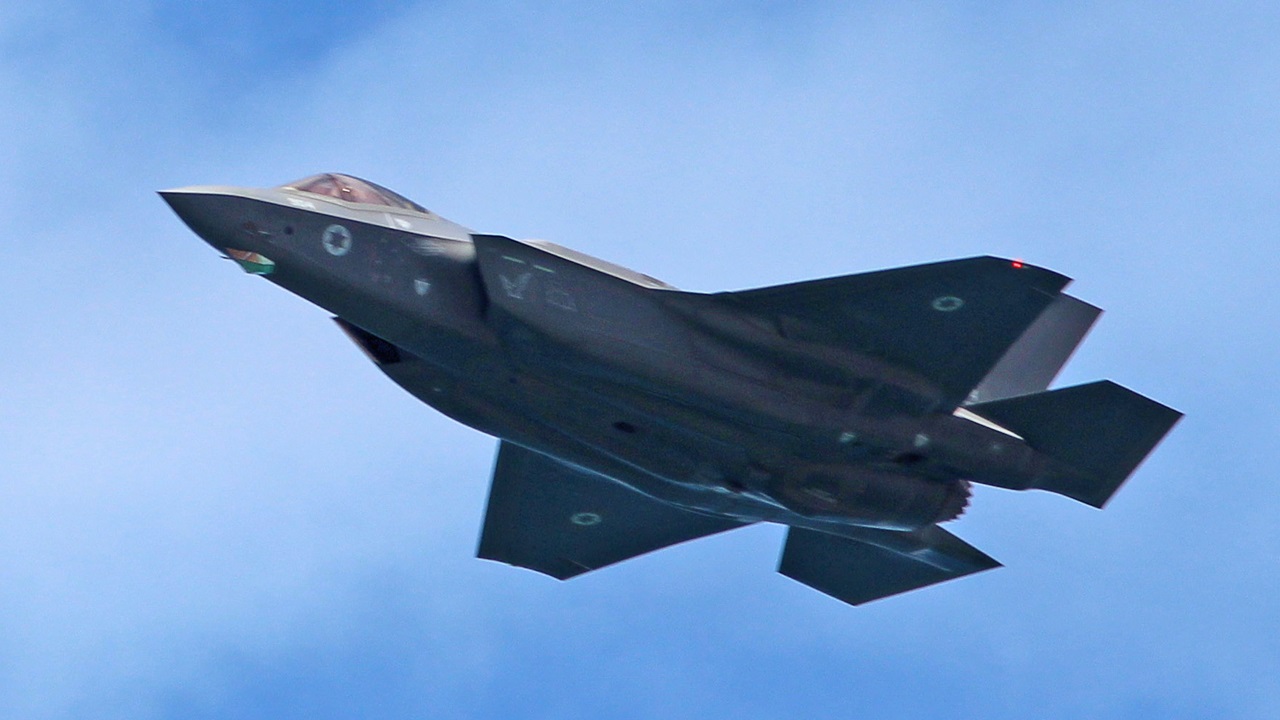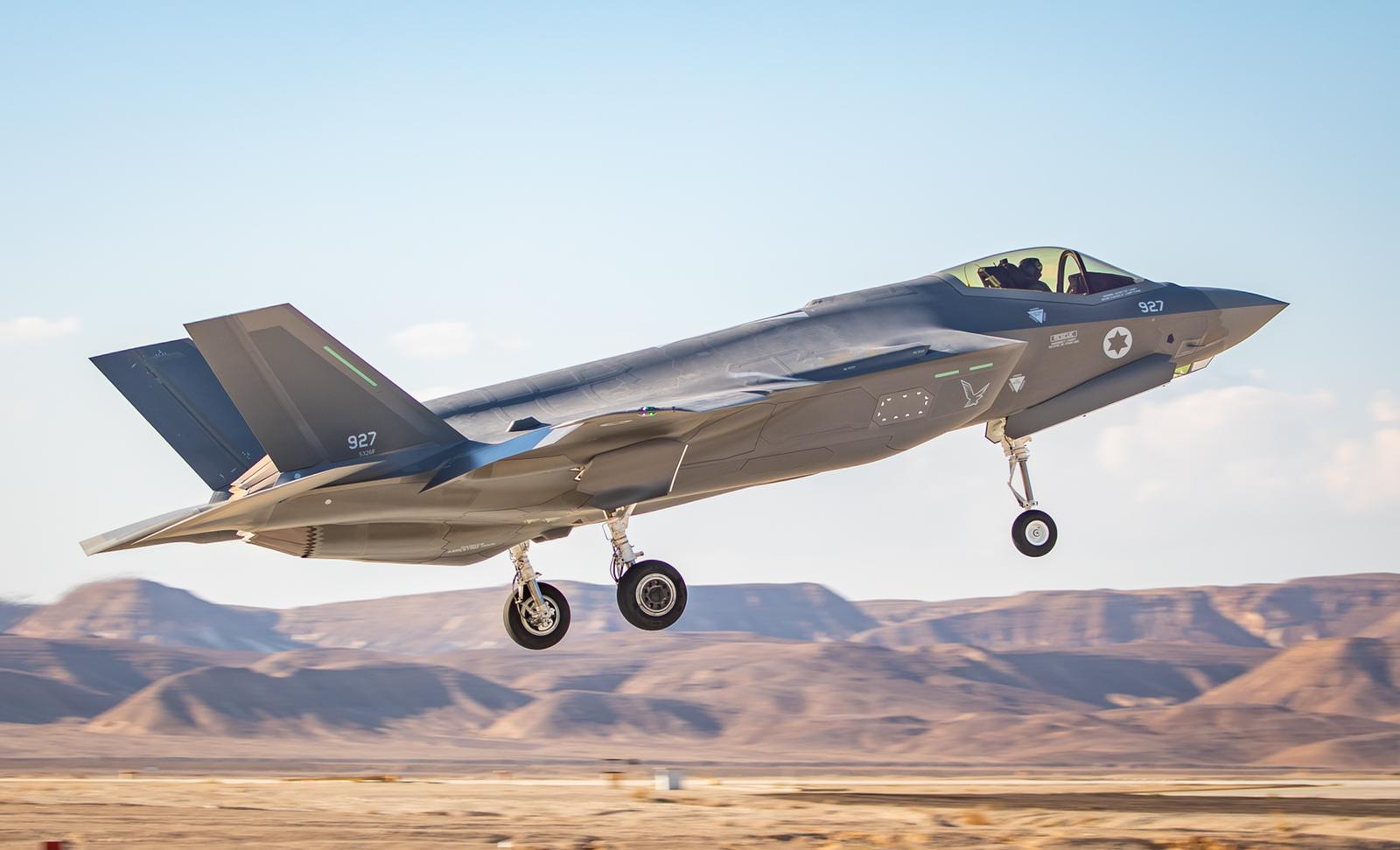
F-35I Adir: Israel Has Its Very Own Custom Stealth Fighter to Strike Iran
What You Need to Know: On Tuesday, Iran fired over 180 missiles at Israel in retaliation for the killing of Hezbollah and Iranian military leaders. Israel has vowed to respond, with speculation rising that the IAF could employ its F-35I Adir fighters in a retaliatory strike.

-Just days ago, the IAF successfully targeted Iranian weapon shipments in Yemen using these advanced stealth jets. As tensions rise, Israel’s capability to strike far-reaching targets is underscored by its history of long-range operations, including its 1981 mission in Iraq and 1985 strike in Tunisia.
-All eyes are now on Israel’s potential response to Tehran’s latest aggression.
F-35I Adir: Israel’s Best Weapon in the Sky Against Iran?
On Tuesday, Iran launched more than 180 missiles at Israel, fulfilling its vow to strike the Jewish state after the Israeli Defense Forces (IDF) began a limited incursion into southern Lebanon. The Islamic Republic has been Israel’s great foe and for more than four decades has called for Israel’s destruction, while it has increasingly provided support to Arab militant groups throughout the Middle East including Hamas in Gaza, Hezbollah in Lebanon, and the Houthi rebel faction in Yemen.
According to the Associated Press on Tuesday afternoon, Tehran claimed it had fired its missiles “as retaliation for attacks that killed leaders of Hezbollah, Hamas and the Iranian military.” The Islamic Republic also “referenced Hezbollah leader Hassan Nasrallah and Revolutionary Guard Gen. Abbas Nilforushan, both killed in an Israeli airstrike last week in Beirut.”
Israel Has Vowed to Respond
The Israeli government has vowed to respond to the latest missile strike, and it is unclear what such a response might look like – but just days ago, the Israel Air Force (IAF) launched a retaliatory strike on the Houthi-controlled port of Hodeidah in Yemen. There are reports it employed the Lockheed Martin F-35I Adir fifth-generation fighters.
It was the IAF’s longest-range combat mission since 1985 and involved a carefully planned flight over the Red Sea, where the stealth fighters refueled en route to the Houthi targets.
“The targets included power plants and a seaport, which were used by the Houthis to transfer Iranian weapons to the region, in addition to military supplies and oil,” the IDF announced on Sunday in a post on X, the social media platform formerly known as Twitter.
“The IDF is determined to continue operating at any distancenear or faragainst all threats to the citizens of the State of Israel,” the IDF added.
Distance Doesn’t Matter to the IAF
The IAF is truly no stranger to conducting operations that are vast distances from its air bases. On June 6, 1981, six U.S.-made F-15 Eagles provided cover for eight F-16 Fighting Falcons – each of the latter aircraft armed with two 1,000 kg (2,205 pound) bombs – took off from Etzion Air Base initially Operation Opera. The IAF aircraft flew low-level across unpopulated stretches of Jordan and Saudi Arabia, reaching the target eighty minutes later.
It was Iraq’s then-under-construction nuclear reactor, and it was located more than 1,100 km (685 miles) from the closest Israeli air base. However, the aircraft were able to make the long-distance flight and succeeded in crippling Baghdad’s nuclear program.
Just four years later, the IAF launched Operation Wooden Leg, a daring aerial raid on the PLO’s headquarters in Tunis. The strike, which was carried out in response to a series of terrorist attacks, employed the IAF’s F-15 Eagles. The aircraft were typically operated as air superiority fighters, but the IAF’s operation was successful, demonstrating Israel’s capability and resolve.
This Time, the IAF Has the F-35I Adir
The distance to Tehran and other targets in Iran is greater than Tunis or Baghdad – yet, the capabilities of the IAF have greatly increased in the past four decades.
As The Jerusalem Post reported this spring, distance would remain a serious issue, but added multiple routes could be taken, including over Syria and Turkey. At the same time, the Israeli fighters could fly through Saudi airspace, possibly with “quiet agreement or opposition.”
The F-35s could be employed to destroy the Islamic Republic’s air defenses and then allow for F-15s and F-16s – as well as F-35s operating in “beast mode” – to strike Iran’s nuclear facilities located at Fordow and Natanz. Moreover, the IAF’s manned aircraft could be further supported by surface-to-surface ballistic missiles and unmanned aerial systems (UAS) or loitering munitions.
Whether Israel will launch such an attack remains unknown at this time, but it certainly has the means and the will to carry out such a mission.

Author Experience and Expertise: Peter Suciu
Peter Suciu is a Michigan-based writer. He has contributed to more than four dozen magazines, newspapers, and websites with over 3,200 published pieces over a twenty-year career in journalism. He regularly writes about military hardware, firearms history, cybersecurity, politics, and international affairs. Peter is also a Contributing Writer for Forbes and Clearance Jobs. You can follow him on Twitter: @PeterSuciu. You can email the author: [email protected].
Image Credit: Creative Commons and/or Shutterstock.


